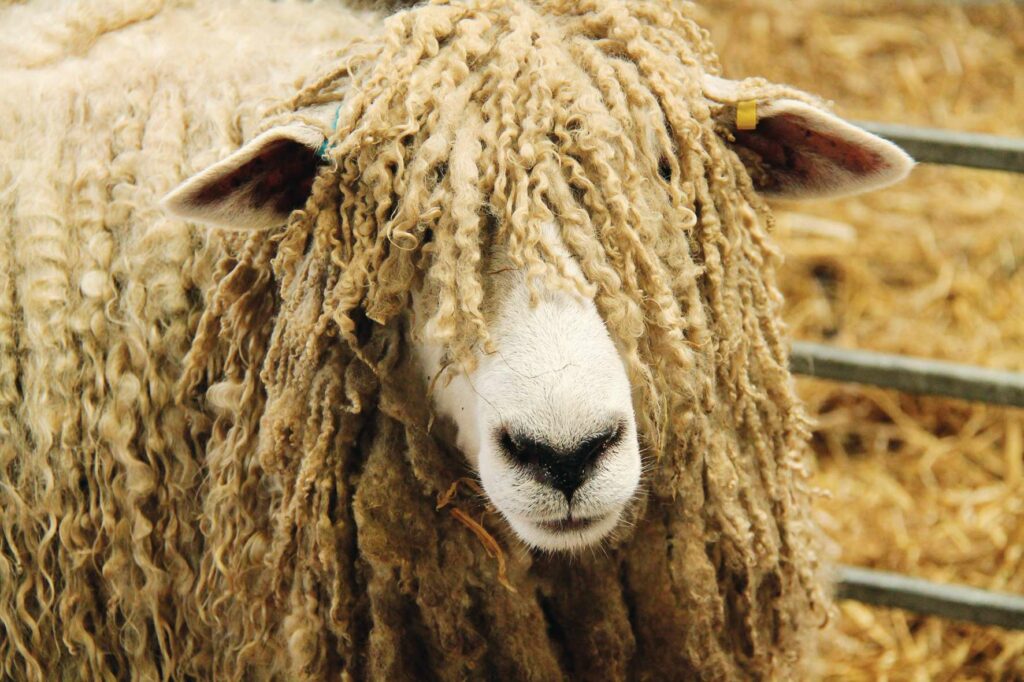A view from the farm
Adam Henson
50 YEARS OF THE RARE BREEDS SURVIVAL TRUST

“A load of odd-bods.” Those aren’t my words but a memorable phrase from my old friend and fellow farmer, Charles Martell. What’s more, he’s fully qualified to say it because he was one of those ‘odd-bods’ waving the conservation flag in the 1970s.
It’s hard for us to imagine today, but in the post-war years, no one had heard of sustainability or biodiversity and public campaigns were mostly focussed on the blue whale and giant pandas. At the same time, agriculture was being intensified and highly productive modern livestock were introduced to meet the demands of a hungry population.
So it’s no wonder that when a small band of enthusiasts stepped forward to save Britain’s historic farm breeds, they were greeted with deafening indifference. Traditional native breeds, such as Lincoln Longwool sheep and South Devon cattle, were considered the ‘old timers of the farmyard’. My dad would often talk about the time he took his Old Spot pigs to auction and was laughed out of the market.
But by 1973, things were changing and Charles remembers the first meeting of rare-breeds farmers “in a greenhouse in Portsmouth”, which marked the birth of the Rare Breeds Survival Trust. “Suddenly you could feel the confidence that we were on to something that was needed,” he says. The Trust was the first charity in the world dedicated to preserving and protecting heritage farm livestock, and this year the organisation is celebrating its 50th birthday.

PRESERVING RESILIENCE
The charity’s early days were all about saving breeds from extinction, because so many had already disappeared or been cross-bred out of existence. It’s pretty sobering to think that we’ll never see another Anglesey cow, Middlesex pig, Buff Medway chicken or the gloriously named Pink-Nosed Somerset sheep.
Even so, there are plenty of people who will argue that one sheep (or cow or pig) is much the same as the next, and it doesn’t matter where they come from or what they look like. Which misses the point of rare breeds conservation. Apart from being part of the rich tapestry of the British landscape, with livestock bred or evolving to suit the distinct soil, climate and food needs of their counties, every breed has unique genetics. It’s this DNA that determines individual traits – the lustrous fleece of Cotswold sheep, for instance – and it’s vitally important that it’s preserved.
Perhaps the Rare Breeds Survival Trust’s greatest achievement is the UK National Gene Bank, which contains frozen semen and embryos from many of our rarest breeds. I like to think of it as a living insurance policy in case a breed was ever wiped out by disease or disaster.
“I like to think of the National Gene Bank as a living insurance policy”
To mark its anniversary, the Trust has a new focus – ‘Native breeds for modern needs’ – and it means shouting from the rooftops about the benefits of our traditional livestock. I could start with a long list of tasty produce, including Romney Salt Marsh lamb, Berkshire pork or delicious Single Gloucester cheese from the milk of Charles Martell’s Gloucester cows. But there are also the various uses of wool, conservation grazing to aid biodiversity and the role rare breeds play in research into reproduction, disease resistance, nutrition and food security. It’s not a bad legacy for a load of odd-bods!
Ask Adam: What topic would you like to know more about?
Email your suggestions to editor@countryfile.com